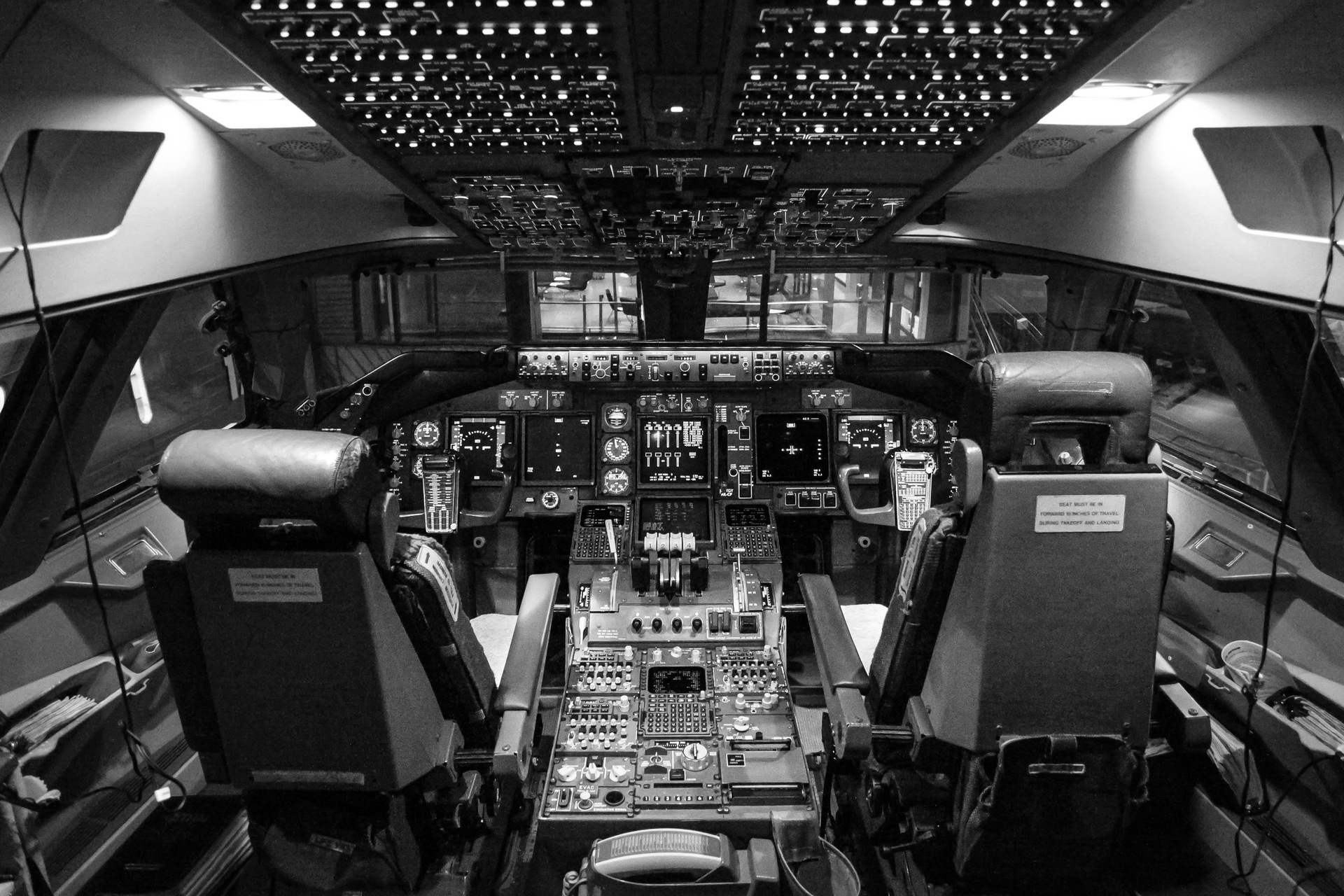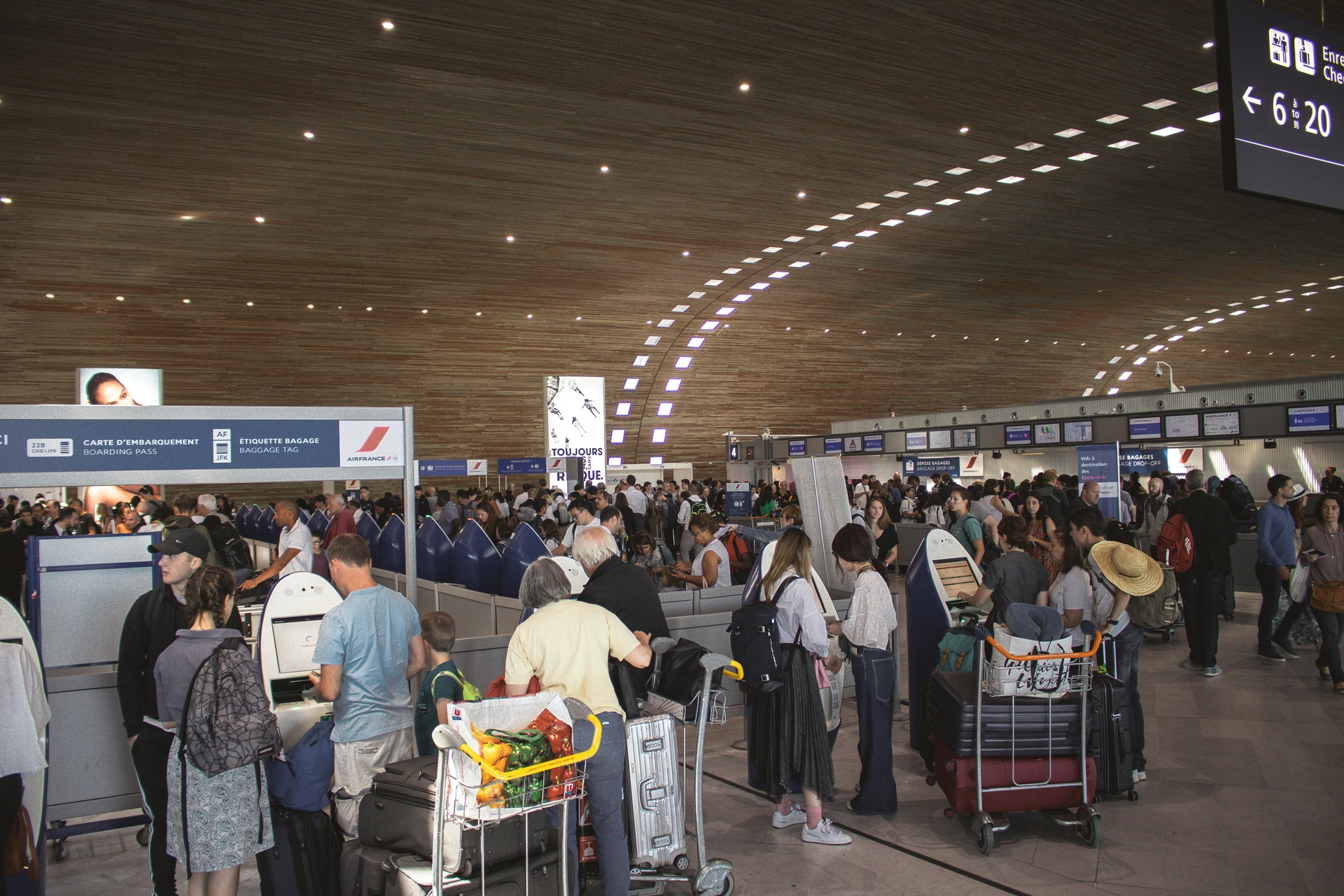
AeroGenie — Your Intelligent Copilot.
Best Strategies to Source Critical Spare Parts (Tools and Tips Included)
July 22, 2025
Parts shortages are grounding aircraft. Airlines are getting creative with AI forecasting, supplier rescue missions, and even dismantling planes for parts. This is the new reality of spare parts procurement.
Sourcing critical spare parts has become one of the most pressing challenges in aviation today. As airlines scramble to keep up with surging passenger demand, they’re battling supply chain chaos that’s choking access to essential goods. Aircraft order backlogs are at record highs, thus aging fleets are being kept in service far longer than originally intended. Meanwhile, geopolitical risks threaten already fragile supplier networks.
Global leaders like Delta, United, Ryanair, Boeing, and Safran are resorting to increasingly creative, and sometimes desperate, measures to secure the missing parts they need. As this article outlines, successful sourcing today requires much more than purchase orders. It’s a complex game of forecasting, collaboration, analytics, and improvisation.
Current spare parts supply chain landscape
The spare parts ecosystem is under unprecedented strain, primarily driven by aircraft shortages that continue to ripple across the global aviation industry.
According to McKinsey, only about 7,000 aircraft were delivered globally between 2019 and 2024, well below the 12,000 that would have been expected on pre-pandemic trajectories. While some observers initially pegged the aircraft shortage at just 5,000 units, McKinsey’s deeper analysis now suggests the real shortfall is closer to 2,000 aircraft, largely concentrated in narrow-body carriers.
This supply-demand imbalance has forced airlines to delay retirements of aging aircraft, pushing global fleet ages to historic highs. McKinsey projects the global in-service fleet will continue expanding at 3.2% annually through 2034, while retirements will remain well below historical norms until at least 2028.
As aging aircraft remain in service, demand for maintenance, repair, and overhaul (MRO) surges. The MRO sector is now expected to grow by 1.2% annually through 2034, reaching $135 billion globally.
Financial strain on aerospace suppliers is compounding these threats. The financial health of many suppliers already trailed behind their peers in automotive and electronics even before COVID-19, and it’s only worsened since. McKinsey puts the performance gap drop at 9% in terms of business resilience and operational continuity when looking 2020–2023. Even small disruptions can now trigger major bottlenecks throughout the supplier pipeline, touching every part of flight operations.
Why sourcing critical parts has become so difficult
The extreme concentration of aerospace supply chains is at the heart of sourcing challenges. Over the past decade, industry consolidation has reduced supplier diversity, leaving OEMs dangerously reliant on a shrinking pool of tier-two and tier-three vendors.
As McKinsey notes, consolidation has particularly affected specialty metals, electronic components, and niche materials essential for critical spares.
This consolidation is further compounded by a lack of sub-tier transparency. Most aerospace companies have historically focused on direct suppliers, but deeper visibility into sub-tiers is essential, especially for components with long lead times like castings, forgings, semiconductors, and specialized alloys.
McKinsey reveals that one aerospace-electronics supplier only discovered how much of its production depended on a few semiconductor companies after undertaking a full subtier review. Once exposed, the supplier was able to intervene and increase throughput by 45%.
Even when alternative suppliers are identified, qualifying them is no quick fix. Boeing’s William Ampofo recently emphasized that qualifying new sources is a long process filled with technical hurdles and regulatory scrutiny.
This leaves airlines with limited options. As spare shortages worsen, used serviceable material (USM) markets are playing a growing role, but even USM is in short supply as retirement rates remain depressed.
Tools and technologies airlines are using to manage spare parts shortages
In response to these mounting pressures, some procurement teams are leaning heavily into data analytics, automation, and predictive tools. Traditional "control towers" monitor delivery delays reactively, an approach that is no longer enough. Instead, airlines and OEMs are leveraging AI-driven early warning systems that analyze procurement metadata, purchase order changes, and supplier behaviors to detect deviations well before shortages materialize.
One commercial-aerospace OEM, for example, reduced shortages by 25% after building a predictive system that flagged risky suppliers based on patterns like frequent purchase order amendments.
Digital procurement platforms are also streamlining supplier engagement. By building “spend cubes” that consolidate data across ERP, finance, and contract systems, leaders can instantly identify categories with supply bottlenecks or cost spikes. Robotic process automation and AI-enabled tools are now automating as much as 40% of procure-to-pay functions.
However, technology is only part of the solution. Boeing has also taken a boots-on-the-ground approach by deploying over 250 technical experts directly into supplier factories to resolve chronic bottlenecks and provide hands-on support.
Creative strategies emerging to source and stock critical spares
With traditional sourcing models faltering, airlines and OEMs are adopting highly creative strategies to secure critical spare parts. One of the most unconventional approaches is aircraft part-out, which involves disassembling relatively young aircraft specifically to harvest materials for active fleets. Delta Air Lines and lessor Azorra recently dismantled an Airbus A220-300 originally operated by EgyptAir, salvaging its engines and components to support Delta’s A220 operations and reduce Aircraft-on-Ground (AOG) downtime.
This proactive teardown strategy maximizes asset value and generates much-needed spares that are otherwise unavailable. In this case, Delta not only harvested airframe components but it also leased the disassembled aircraft’s engines to support its current A220 fleet, thus turning an entire decommissioned aircraft into a high-value inventory source.
Other carriers and OEMs are expanding raw material stockpiles to build redundancy. Safran, for example, is growing titanium inventories and developing additive manufacturing capabilities to bypass long lead-time forging processes. This not only reduces dependence on vulnerable sub-tiers but also allows for faster, more flexible part production.
Mega-orders are also playing a role in stabilizing supply pipelines. Qatar Airways recently placed a record-breaking order for up to 210 widebody aircraft with Boeing: 130 Dreamliners and 30 777X aircraft. This massive commitment aims to guarantee access to parts and production slots well into the next decade.
Collaboration as a supply chain stabilizer
While creative sourcing tactics can help address immediate needs, true long-term stability requires closer collaboration. Boeing’s investment of capital into financially struggling suppliers, combined with its deployment of technical field teams, exemplifies this shift toward deeper OEM-supplier partnerships.
McKinsey emphasizes that formalized supply chain centers of excellence can further strengthen coordination, enabling OEMs and suppliers to jointly identify structural capability gaps, manage risks, and maintain performance visibility across complex supplier networks.
Another key collaboration lever is introducing more flexible delivery contracts. Historically rigid, multi-year delivery schedules limit airlines’ ability to adapt to economic shifts or geopolitical volatility. McKinsey advocates for contractual models that allow dynamic slot swaps or negotiated deferrals, helping balance supply and demand over longer horizons.
In parallel, joint scenario planning exercises, often called tabletop exercises, are being adopted to simulate potential shocks, including export controls, sanctions, and military conflicts that could kneecap key supply chains overnight.
Workforce and talent gaps in spare parts procurement
Sourcing critical spare parts involves people just as much as parts. Currently, the aerospace workforce is facing a severe skills gap, particularly in procurement and supply chain management. As McKinsey points out, much of the experienced “gray hair” talent is retiring, while incoming workers often lack the institutional knowledge needed to navigate highly complex, multi-tier aerospace supplier networks.
Compounding this, aerospace procurement has historically underperformed its peers in functional maturity. McKinsey's data shows aerospace procurement capabilities lag nearly 15% behind the automotive industry, leaving little room for standout leaders to emerge from within.
The skills gap is particularly acute in supplier performance management, contract negotiations, and production planning, areas directly tied to spare parts sourcing. For some of these roles, McKinsey estimates skill mismatches exceed 4–6 percentage points, with many qualified professionals already employed elsewhere.
Digital transformation only widens this gap. As AI, predictive analytics, and spend cubes become commonplace procurement tools, companies are scrambling to recruit data scientists, digital-native category managers, and procurement technologists. These are roles that rarely existed in aerospace procurement just five years ago.
The role of lessors in spare parts strategy
Aircraft lessors are emerging as unexpected power players in the spare parts equation. As airlines struggle to secure new aircraft deliveries, lessors hold significant leverage due to their ownership of roughly half the world’s active fleet.
Today, lease rates for narrow-body aircraft have soared. For example, the lease rate for a Boeing 737 MAX 8 rose from $283,000 per month in 2021 to $452,000 by 2025. Lessors are capitalizing on these tight conditions not only by raising prices and extending leases, but also by exploring new aftermarket revenue streams tied to high-value inventory.
The Delta-Azorra A220 teardown project referenced earlier is a perfect example of this evolution. Azorra, a relatively young lessor, acquired several retired EgyptAir A220s and transferred a few to new carriers, and then partnered with Delta to dismantle one for parts harvesting, demonstrating how lessors are now directly monetizing part-out value.
Such hybrid asset management models blur the lines between traditional leasing, MRO support, and spare parts procurement, offering new flexibility and resource expansion for both lessors and airlines during sustained parts shortages.
Forecast: How spare parts sourcing may evolve over the next 5–10 years
While many of today’s challenges are painful, the spare parts crisis may gradually ease toward the end of this decade—as long as demand and production stay in careful balance. McKinsey projects that from 2028 onward, aircraft retirement rates will return to historical norms of roughly 2.7% annually, helping normalize fleet ages and reduce pressure on spare parts availability.
The airlines themselves are cautiously preparing for this next chapter.. Delta Air Lines reports that while it continues to aggressively grow capacity and maintain strong load factors, it is heavily reliant on extending aircraft utilization. Its average fleet age remains elevated, and significant MRO spending is built into Delta Air Lines’ 2024–2025 forecasts. The airline plans to keep older aircraft airworthy while waiting for new deliveries to arrive. This illustrates the ongoing near-term burden even as longer-term fleet renewal is expected to stabilize inventory demand.
United Airlines is seeing the same dynamic, noting that while it maintains ambitious growth plans and major fleet orders, delays in the delivery of new aircraft continue to require expensive maintenance on older widebody and narrowbody aircraft that remain in service longer than originally scheduled. United has specifically called out supplier constraints and MRO parts lead times as key business risks directly impacting its cost structure.
Meanwhile, Ryanair, which operates one of the youngest and most standardized narrowbody fleets, still finds itself exposed to broader systemic risk. While it prides itself on maximizing aircraft utilization and controlling maintenance costs, Ryanair acknowledges that supplier delays, OEM delivery shortfalls, and high demand for narrowbody spares create exposure even for ultra-efficient fleets.. Their lean operating model may blunt some of the worst effects, but it does not fully insulate them from systemic spare parts shortages crippling the aviation industry.
At the same time, deliveries of next-generation aircraft, with more composite materials and highly efficient engines, will slowly reduce some categories of spare parts consumption. New designs like Boeing’s 787 Dreamliner and 777X promise 25% improvements in fuel use and lower ongoing maintenance demands compared to older models.
While promising, these transitions may also bring new sourcing challenges. As more next-gen engines like LEAP and GTF enter the fleet, early production and performance issues have triggered unplanned maintenance visits—highlighting the fragility of relying too heavily on unproven platforms.
There’s also real risk that today’s shortage flips into future oversupply. If OEMs ramp production aggressively while demand softens due to recession, geopolitical disruptions, or over-correction, it could flood the market with excess capacity, driving lease rates down and undercutting MRO volumes.
The stakes are high—but so is the opportunity
The spare parts crisis has become the defining battleground for airline survival. It will determine which airlines, OEMs, and lessors can remain afloat—even profitable—through the next decade of volatility.
As this arena shifts from reactive firefighting to more predictive control, those who master AI-driven forecasting, subtier transparency, and flexible sourcing models will outmaneuver competitors and leverage supply chain disarray as a competitive edge.
Solutions like ePlaneAI are critical. Our aviation-specific AI platforms help procurement leaders move from lagging indicators to real-time visibility and transform complex supplier networks into resilient, data-driven ecosystems. Book a demo with ePlaneAI to see how you can stabilize your spare parts pipeline before the next disruption hits.
Aviation Maintenance Trends That May Gain Momentum in Uncertain Circumstances
Aircraft are staying in service longer, supply chains are a powder keg, and the tech is evolving overnight. Discover the maintenance trends gaining momentum and what they mean for operators trying to stay airborne and profitable.

October 2, 2025
Choosing the Right Aircraft Parts with Damage Tolerance Analysis
The future of aviation safety is all about the parts. Authentic, traceable parts bring optimal damage tolerance and performance to fleets for maximum safety and procurement efficiency.

September 30, 2025
How to Enter New Aviation Markets: The Complete Guide for Parts Suppliers
Breaking into new aviation markets? Learn how suppliers can analyze demand, manage PMA parts, and build airline trust. A complete guide for global growth.

September 25, 2025
5 Aviation Marketing Strategies You Should Use to Sell to Global Airlines
Airlines face shrinking margins and rising expectations. See how top strategies—dynamic offers, partnerships, personalization, and more—can close deals with global carriers.
